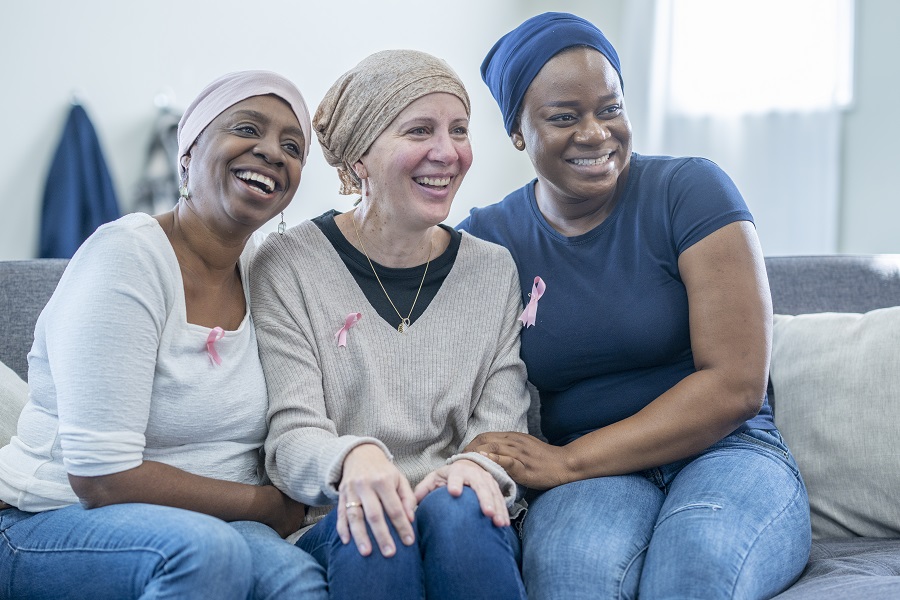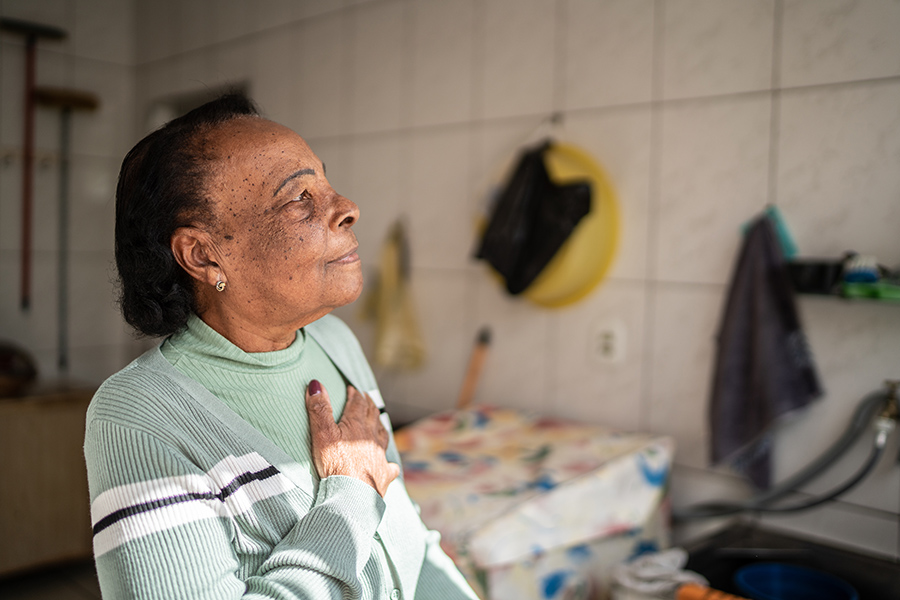In the U.S. alone, more than 700 individuals – mostly women – are diagnosed with breast cancer each day. One out of every eight women will be diagnosed with breast cancer in their lifetime. If you are the one in eight, the positive advancements made in breast cancer research are not just medical advancements; they may have a direct impact on your survival. Some of the most recent positive advancements in breast cancer treatment are highlighted below.
1. Advancements in Early Detection of Breast Cancer
Early detection of breast cancer can be life-changing. Detecting breast cancer in its very early stages can mean the difference between a survivable cancer and a non-survivable cancer. Not only does early detection lead to a wider variety of treatment options but it can increase the chances of treatment success and improve outcomes. The following are some improvements made to detect breast cancer in its early stages:
- 3D Mammography: Also known as tomosynthesis, a three-dimensional mammogram is a procedure that takes an extensive series of low-dose x-ray images from varying angles and reconstructs them into a 3D image. The total number of reconstructed images depends on the thickness of the compressed breast. All trials have so far demonstrated a better visibility of cancer, however cancer detection rates vary by country and age of participants. A recent study of over 500,000 women found that 3D mammograms were associated with a decreased risk of advanced breast cancer in participants with both high breast cancer risk and highly dense breast tissue. It is still unclear if this is more efficient than standard 2D mammography when it comes to detecting breast cancer at a less advanced stage.
- Risk-dependent Screening: The WISDOM Study (Women Informed to Screen Depending on Measures of Risk) compares two approved screening approaches: annual mammograms for all women beginning at age 40 vs. a personalized screening recommendation based on a person’s individual risk factors. The groundbreaking WISDOM Study is testing a personalized approach to screening based on a person’s risk factors such as family history, lifestyle, breast density and genetic makeup, with the goal of improving early breast cancer detection rates. WISDOM is also making a focused effort to enroll Black women in the trial.
New Treatments for Breast Cancer
For more than 2,000 years, breast cancer was considered a systemic disease. In 1757, French physician Henri Le Dran first suggested surgical removal of the localized tumor as a possible cure. In 1894,William Halsted reinvigorated Le Dran’s theory and performed the first radical mastectomy. The Halsted procedure involved the removal of the entire breast, chest muscles and axillary lymph nodes. The “Halsted mastectomy” became the gold standard for more than half a century, leaving many women with major disabilities. It wasn’t until 1976 that radiation therapy combined with lumpectomy was initiated as a treatment plan and shown to be just as effective as a mastectomy in many cases.
Society has continued technological and scientific advancements, providing a wider range of treatment options. Breast cancer can now be divided into subtypes based on whether they:
- are hormone receptor (HR) positive which means they contain estrogen and/or progesterone receptors (ER, PR).
- have high levels of the Human Epidermal Growth Factor Receptor 2, or HER2 protein (HER2 positive).
Some of the latest treament developments include:
- Targeted Therapy along with Hormone Therapy: New treatments have recently been discovered that show hormone therapy, when combined with chemotherapy, can increase in survival rates and extend time until chemotherapy is required. Recently approved drugs include Ribociclib, Alepelisib, Abemaciclib, Palbociclib, Everolimus, and many more. These targeted therapies can be broken down into HR-positive treatment and HER2-directed treatment.
- HR-Positive Treatment: Hormone therapies have been a mainstay of treatment for HR-positive cancer. However, there is a new focus on adding targeted therapies to hormone therapy for advanced or metastatic HR-positive cancers. These treatments could prolong the time until chemotherapy is needed and potentially extend survival. Approved drugs for use with hormone therapy include: Palbociclib (Ibrance), ribociclib (Kisqali), and everolimus (Afinitor) for treatment of advanced or metastatic breast cancer; Abemaciclib (Verzenio) for treatment of advanced or metastatic HR-positive/Her2-negative breast cancer (also approved for some who have had surgery for early stages HR-positive/Her2-negative breast cancer); and Alpelisib (Piqray) for treatment of advanced or metastatic HR-positive, HER2-negative breast cancers that have a mutation in the PIK3CA gene.
- HER2-Directed Therapies: Breast tumors can have receptors (proteins) that impact how they grow and spread. If a tumor has a high level of HER2 proteins, that cancer is considered to be HER2-positive. This particular kind of tumor grows and spreads more quickly than HER2-negative cancers. While previously about 80% of breast cancers were considered HER2-negative, recent studies have found that up to 55% of breast tumors might have low levels of HER2 — meaning that they could be treated with HER2-directed therapies like the drug trastuzumab deruxtecan (Enhertu). Clinical trials compared results of people with metastatic breast cancer who received just chemotherapy vs. chemotherapy and trastuzumab deruxtecan. The patients who were given trastuzumab deruxtecan alongside chemo had higher rates of progression-free survival periods and overall survival, indicating indicate this treatment will likely become a new approach to care.
- Test-based Treatment Options: A phase 3 clinical trial known as TAILORx shows no benefit from chemotherapy for 70 percent of women with the most common type of breast cancer. Findings indicate that for women with hormone receptor (HR)-positive, HER2-negative, axillary lymph node–negative breast cancer, treatment with chemotherapy and hormone therapy after surgery is not more beneficial than treatment with hormone therapy alone. The data can help inform treatment decisions for many women with early-stage breast cancer. A separate trial known as RxPONDER used the same gene expression test to evaluate treatment options for women that have a more advanced form of breast cancer. The RxPONDER study found that some postmenopausal women with HR positive, HER-2 negative breast cancer that has spread to several lymph nodes and has a low risk of recurrence do not benefit from chemotherapy when added to their hormone therapy.
Ongoing Breast Cancer Research
Breast cancer research is not ending anytime soon. Breast cancer still stands as the second most common cancer among women. With advances in treatment, diagnosis, and prevention, a breast cancer diagnosis today is a very different one than it was even 30 years ago. Just three decades ago, the options for breast cancer treatment were limited and no one thought prevention could be possible. Ongoing research continues to save lives, and many survivors willingly and courageously participate in research opportunities to “pay it forward.” Current breast cancer research studies include:
- Focused Research on Black Women and Breast Cancer: New studies are focusing on women of color in efforts to reduce clinical outcome inequities and provide better healthcare for all. Historically, breast cancer studies and trials were mostly focused on white female subjects. Despite the 43% decline in breast cancer deaths over the past 30 years, communities of color are not seeing the same improvement in outcomes. There continues to be a difference in survival rates between Black women who are diagnosed with breast cancer and white women who are diagnosed with breast cancer. Black women are passing away from breast cancer at a rate that is 40% higher than white women, surpassing lung cancer as the leading cause of cancer death for Black women.
- ctDNA and Biomarkers: When cancer cells die, ctDNA (also known as Circulating Tumor DNA) is released into the bloodstream. Identifying and testing the ctDNA in the blood for biomarkers is a rapidly growing area of study. Some ways in which ctDNA might be utilized in the future include looking for resistance to specific treatments, predicting cancer recurrence in recovered patients, determining the success of multiple treatment options, and detecting the presence of cancer or a high-risk condition before a mammogram is even conducted.
Supportive Care
While most public attention to breast cancer focuses on beating the disease, less is shared about the brutal side effects of treatment. New clinical trials are also exploring medicines and techniques to try to improve supportive care for people with breast cancer. Studies are currently investigating:
- Ways to prevent the damage to nerves that sometimes happen with certain chemotherapy drugs.
- Drugs or other treatments that might help with memory problems and other brain symptoms after chemotherapy.
- Heart or blood pressure drugs that can help prevent the heart damage sometimes caused by common breast cancer drugs.
- Medicines to help treat the tired feeling that cancer can cause.
For breast cancer support for you or a loved one, visit the National Breast Cancer Foundation Support Center.
Resources:
Advances in Breast Cancer Research | NCI
3 Advancements in Breast Cancer Research This Year | Chester County Hospital
Breast Cancer Awareness Month | National Breast Cancer Foundation
The History of Early Breast Cancer Treatment | NIH
What’s New in Breast Cancer Research? | American Cancer Society
* We follow AP Style guidelines for publications






















